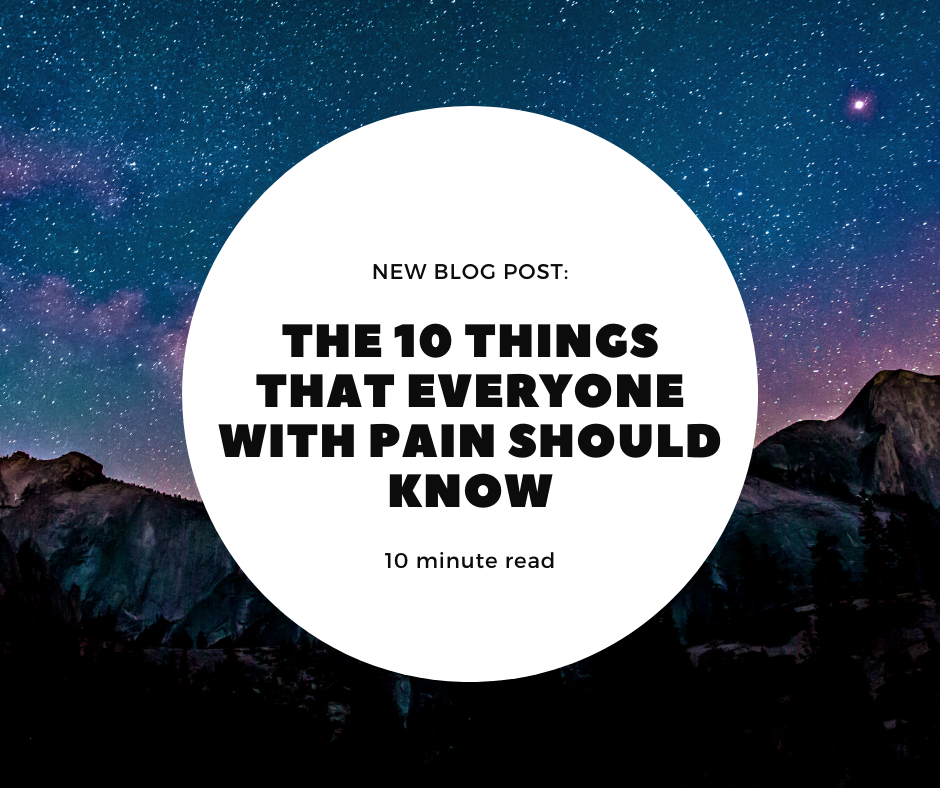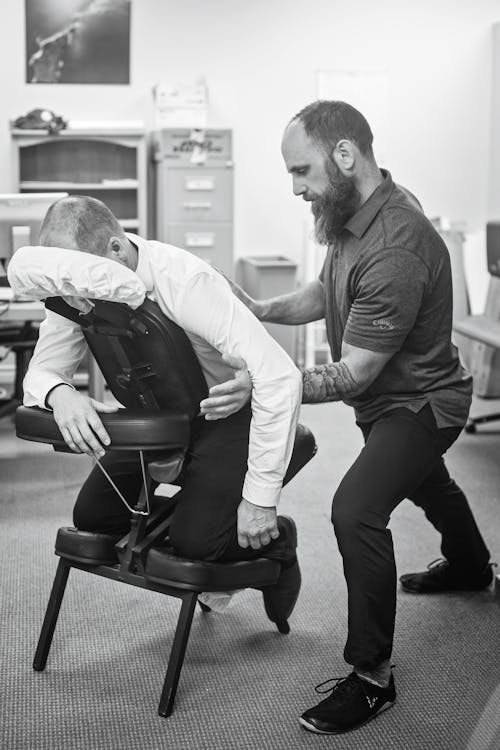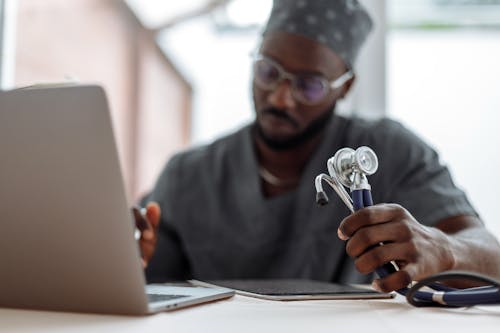The 10 things that Everyone with Pain should know (10 mins).


Hello everyone. Welcome back to another blog post for Elevation Process on a topic that, I hope, will be beneficial for folks experiencing chronic pain. The impetus for this post has been brewing in the back of my mind for some time now and, after a busy holiday season, I finally have some time to put it to paper so to speak.
For those of you who are new to blog (and the site), my name is Brandon Ulmer, and I am fortunate enough to work as a psychologist in a terribly busy chronic pain management clinic. I also suffer from chronic low back pain. The synergy of these two experiences gives me a remarkable vantage point in that I can see the problems both in treating pain, as well as living with it, played out in the context of my own life daily. Please understand that my intentions in writing this post are not to be controversial, though I suspect that some of the points may illicit that response. Nor are my intentions entirely altruistic – we do offer a program for managing pain for those that are interested in further educating themselves on non-medication alternatives. My primary intention, in writing this post, is to educate and to potentially save readers years of frustration and anger; energy that could be better used in promoting healing and a gradual return to meaningful activity in life. Please share this post if either you, or someone you know, suffers with chronic pain; This may be the article that changes the course of their life. With that, the 10 things you need to know:
1.There is no “cure” for chronic pain.
We might as well address the elephant in the room. To hear someone involved in the medical system say this, feels like a punch to the gut. You may be experiencing strong emotions as a result of reading this; know that you are not alone. Many people are going to disagree with this truth and point to someone, somewhere, who tried so and so’s treatment and their pain magically vanished. While it is true that many people will experience significant pain relief from their tertiary treatments, “curing” the pain in the traditional sense is not something that we are currently capable of as a medical system. The reason has to do with the complexity of our neural systems and how our brains pick up and interpret pain signals. The complexity of this system (and the brain in general) is something that we are slowly starting to understand. For readers interested in a further discussion of this, I would point you to the internet and something called the “Gate Control Theory” of pain. Any discussion of a lack of a “cure” for pain naturally leads to my second point…
2. No “cure” does not mean no “hope.”
Many people who hear me say that there is no current “cure” for chronic pain, believe that I just told them that there was no hope; this is NOT what I am saying at all. Research in the area of chronic pain has progressed by leaps and bounds over the past 10 years. In fact, it is not an exaggeration to state that after people go through our session on pain education (which can be accessed here), they know more about chronic pain than pain specialists did 10 years ago. A great example is with headache. It surprises many people to know that headache is the number one reason people report to a hospital emergency room across the globe. This ultimately costs the global economy billions in lost production and employee sick time. Pharmaceutical companies are aware of this, and several are hard at work on a pill that will either reduce or eliminate the debilitating effects of headache. Imagine what such a pill would be worth. Chronic pain is a global problem, and that is a good thing. It means that some of the most brilliant minds in science are working towards a solution. I believe that over the course of my lifetime, research (and subsequent treatment) will continue to improve and become more effective. I encourage people to put their hope in that, rather than the myriad of current therapies that offer short-term benefit. Related to this, my third point…
3. We need to modify our expectations.
We need to stop looking at tertiary treatments for pain as the potential “cure.” The list of therapies below is by no means complete, but includes treatments such as: massage, acupuncture, chiropractic, physiotherapy, laser therapy, Botox injections, nerve ablations, spinal cord stimulators and any other therapy that you can possibly imagine. This IS NOT to say that you may not find these treatments to be of short-term benefit. Said another way, all the therapies listed above can be helpful in reducing the noise of chronic pain (or helping to close those pain gates) on a temporary basis. Where we often get ourselves into trouble though, is when we spend money that we do not have to try therapies that we think are going to provide the “cure.” As stated earlier, we do not currently have a cure. If I go into these therapies thinking that they will solve the issue permanently, I am often left disappointed and frustrated. If however, I go in with the attitude that this may be helpful as a part of my ongoing treatment for pain, I am much less likely to experience disappointment. This mindset also helps me to discern which treatments I get the most benefit from, and to spend those precious dollars accordingly.

4. Medications (including opiates) are just one piece of the puzzle that is chronic pain.
Medications do have an important role to play in the ongoing management of chronic pain. In the case of opiates, they are another tool in helping to temporarily turn down the noise of pain by helping to close pain gates (just as the tertiary therapies listed above also do). If we are being honest though, medications are just one piece of the puzzle, and they are not even the most important part. We live in a society that expects (and demands in some instances) instant relief from whatever ails them, via pills and the perceived advances in health technology. Medications in high dosages, and I am speaking to opiates here, can also be extremely dangerous and ultimately counter-productive in that they serve to sensitize the pain system over time. I know that a great many people reading this, take medications; the point of this article is not to go down the rabbit-hole of whether you should or should not use them. Talk with your physician or pain specialist and make the choice that feels right for you. Just understand that there is not one pill out there that will “cure” your pain either; there are also many other therapies that can help you to manage pain as well. Perhaps medications, in combination with other therapies, would ultimately provide the most benefit?
5. The medical system cannot “see” (i.e., prove) that you have pain.
The human body is an amazingly complex and wonderful thing. Over the years in which I have been fortunate to work at a pain clinic, I have seen some truly remarkable things. I have seen people whose x-rays and MRI scans look completely normal, be racked with chronic back pain. I have also seen folks, whose backs look as twisted as a question mark under MRI, report experiencing no pain. The point here is just that, despite all the fancy tests and diagnostic imaging that we can now employ, we still do not have the capacity to “see” and thus measure pain. This inability leads to issues when we are no longer able to work due to pain (as anyone currently fighting for disability benefits can attest). If we cannot see it, how do we prove it? At the pain clinic in which I work, we move forward with the assumption that the pain you experience is real, even if we cannot see it. To be honest, even if we could “see” the pain, it would not change the recommended treatment anyway. As medical practitioners, we trust that you experience pain just as you say that you do. This brings me to my next point…
6. Stop trying to “prove” that you have pain.
Some people are going to believe that you have pain, and some will not. Coming back to my previous point, the fact that we cannot “see” pain, means that many people (even doctors, nurses or specialists) will refuse to believe that you experience pain daily. Many of these people still see chronic pain as predominantly a mental health issue; said another way, you experience pain because you are depressed or anxious. While it is true that pain and mental illness are associated with each other (particularly true with anxiety and depression), they do not cause one another. Everyone is entitled to their own beliefs, just as you are entitled to yours. Do yourself a favor and resolve to stop using the precious little energy that you have during the day, trying to prove that you have pain to others. Related to this, it is okay to keep some of these people (even close friends or family) at arm’s length. Agree to disagree and move forward – or get a referral to another specialist.
7. Your family doctor is an important part of your care team – work with them.
I have often thought that family physicians or general physicians (GP’s) are put in an exceedingly difficult spot, trying to treat someone with chronic pain. GP’s need to know a little bit, about a great number of medical issues. Many of them were never taught the intricacies and research on the treatment of chronic pain when they attended medical school. However, due to their unfortunate position as the first point of contact for many when they access the health care system, we expect them to be specialists in every issue that ails us (pain included). We also expect them to assume the role of psychiatrist, psychologist/counsellor, physiotherapist, and every other accessible service as well. Remember that your GP’s have an important role to play, as a part of your healthcare team – but it is not their job to fill all the roles I just mentioned. Your GP is primarily responsible for overseeing your care. As such, they are responsible for making the referrals to other specialists that may really be able to help you. It is of vital importance that you have a good working relationship with your GP. Do they believe that you experience chronic pain? Do they listen to your concerns and try to adjust treatments or make changes when appropriate to do so? Good communication is often the driver behind successful relationships; likewise, poor communication often makes relationships more difficult. The time and energy that you spend in working on this relationship (or finding one that will work) will be well worth it to you in the end.
*Try to be nice to your doctors as well. It is certainly hard to live life in pain – it is also hard to treat someone who has chronic pain. Be patient, ask questions and express gratitude for any help that they can offer. The old proverb that “you can catch more flies with honey than vinegar” means that it is much easier to get what you want when you are polite, rather than by being ignorant and rude. *

8. Your mental health will be tested – ask for help if you need it.
Many people whom I see for their initial session at the clinic in which I work, are put off by the fact that they were referred to a psychologist for their chronic pain issues. We naturally jump to the conclusion that the pain doctor must think that “this is all in my head,” and that he/she does not believe that you have pain. This could not be farther from the truth! The simple fact is that living life in pain every day is incredibly difficult. The pain feels exhausting and starts to wear us down over time. Is it any wonder then, that this can have an impact on our overall mental health? Remember that pain has a way of impacting every facet of life (career, relationships, health, finances); we cannot even attempt to address those issues in a 15-minute appointment with your pain specialist (or GP). Psychologists have a vital role to play in multidisciplinary clinics, by working to educate and support the people that arrive for treatment. Be careful about making automatic assumptions related to what treatment will entail. Having someone that is not a close family member or friend to talk to about the pain can be an incredibly valuable resource; one that I would encourage every person experiencing pain to consider if the service is offered.
9. Do not underestimate the power of education.
I often find it amazing that people will spend more time researching their next dishwasher or motor vehicle, than they will learning about their own health. For some reason, we have this attitude that the realm of personal health can/should be left up to our doctors, or that the health system knows what is best for us. This is a fundamental error on many levels, as no one cares more about your health than you do. Worse, when we rely on others to “fix” us we become passive participants of health care. This of course leads us to try all manner of therapies, some of which are harmful or can even make the pain worse, because we want to follow our doctor’s advice and to be a good patient.
When I work to educate myself, it empowers me to take an active role in my own healthcare. It allows me to engage in constructive conversation with those involved in my care team, as well as to advocate for myself when no one else will. Education reinforces our sense that we have some measure of control over the situation, and that we are not simply a marionette on strings, dancing at the whim of the pain we experience. Many people with pain feel that they have lost control of this in their life; education is how we get it back. Be careful to get your education from a trusted source.
10. You can still live a great life, even with the pain.
This statement is referred to as a dialectic in the parlance of psychology – dialectical means two opposing things being true at once. If the pain that you experience is new, this statement can be hard to wrap your head around but is true. The first step is to learn about the pain that you are experiencing, as well as what you can do to manage that pain on your own, independent of medications. Part of this learning exercise is working to identify what your new limitations are, and then once you identify them, modifying the way that you live your life to stay within these new limits (called pacing). Once I know what my limits are, I can plan them around activities that I enjoy. I have been truly fortunate to have accompanied many people on their journey from the depths of despair, back to re-engaging with life – and in some cases, even returning to work. I know that this is possible. I have seen it happen. You can do it too. We would love to help you get there.

Thanks very much for spending the time to read this article, and I hope that you have found it to be of benefit. If you have any questions or comments, I would love to hear from you. My email is brandon@elevationprocess.com. Also, if you would like to keep up on future content, consider subscribing to our newsletter list below. If you are interested in our educational course on managing pain, it can be accessed here.
Join our newsletter: